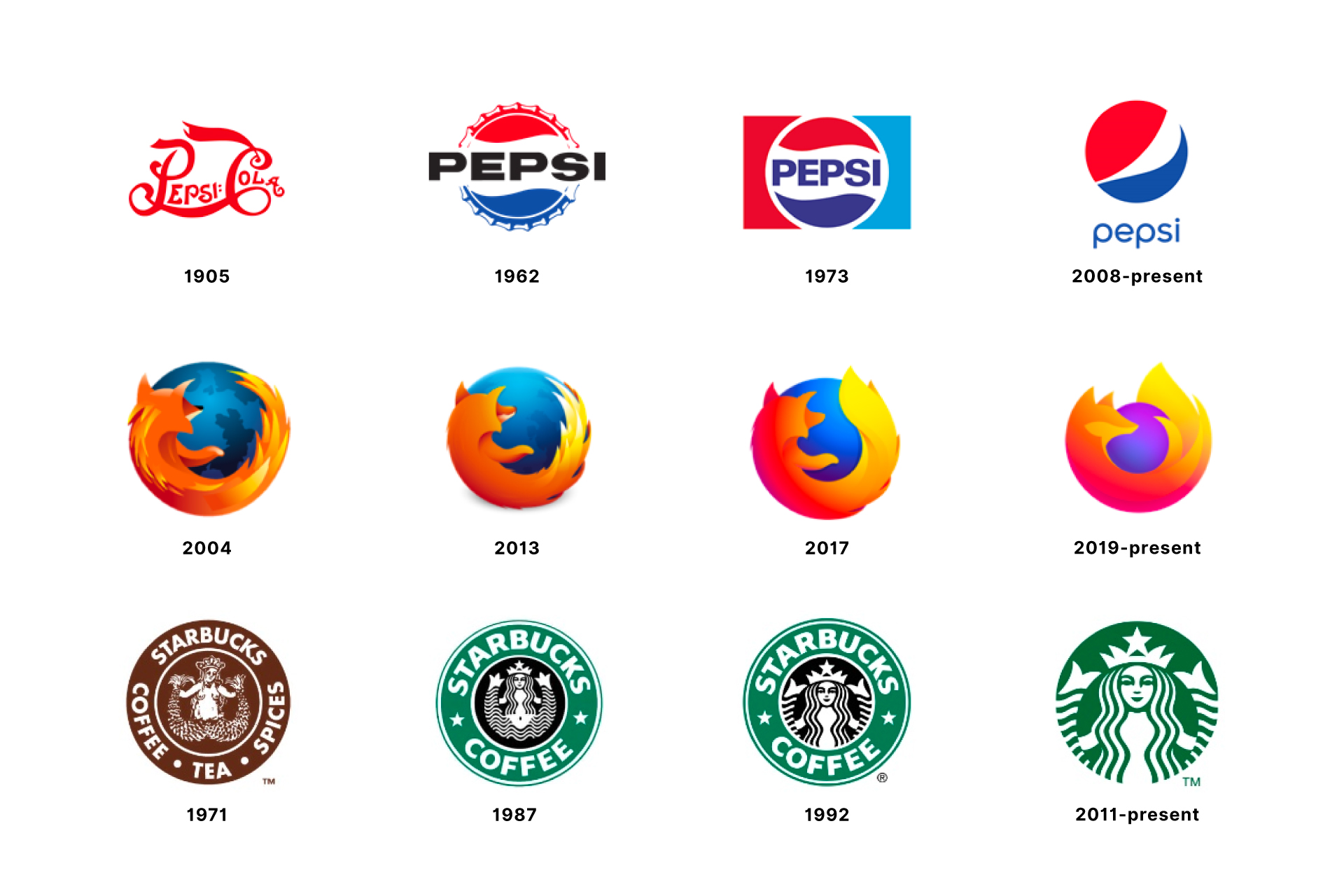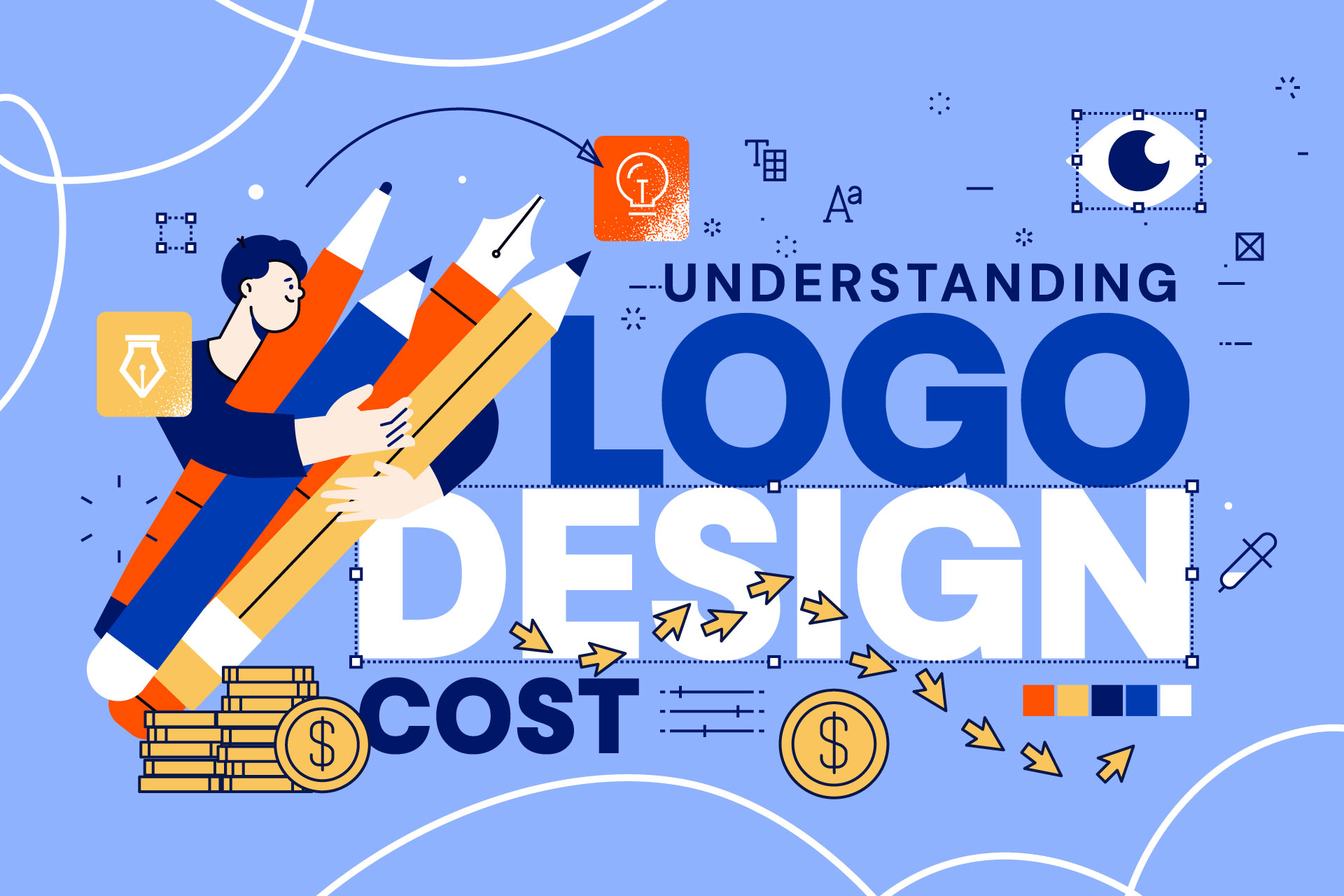Creating a Good Logo Design: 10 Mistakes to Avoid

A logo isn’t just a tiny emblem or a stylish set of characters representing a brand. It’s the face of a company, the first point of connection, and the visual cue that can set a brand apart in a consumer’s mind.
Ensuring a good logo design can be pivotal for brand recognition, but there are pitfalls to watch out for in this creative journey.
Table of Contents
1. Underestimating the Value of Simplicity
“Simplicity is the ultimate sophistication,” said Leonardo da Vinci.
Some of the most recognized brands worldwide, from Apple to Nike, embrace simple logos. Overcomplicating a design can confuse the target audience and dilute brand recall.
2. Following Trends Blindly
While it’s crucial to be aware of the latest design trend in 2024 or any other year, designing purely based on what’s trending can make a logo outdated once that trend fades.
As designer Paula Scher remarked, “Logos are a graphic extension of the internal realities of a company.” It’s about the essence, not the trend.
3. Neglecting Brand Message
A logo should be a reflection of a brand’s values, essence, and vision. When a logo fails to communicate these, it loses its essence.
As Jeff Bezos aptly put it, “Your brand is what other people say about you when you’re not in the room.”
4. Simply Using AI to Generate a Logo
While AI tools have revolutionized many areas of design, relying solely on automated tools for logo creation can result in a lack of uniqueness.
As designer Neville Brody mentioned, “Digital design is like painting, except the paint never dries.” Craftsmanship matters.
5. Choosing the Wrong Designer Skill Set
“Design is thinking made visual,” Saul Bass once said.
The graphic design for hire market is vast, but hiring someone who doesn’t specialize in logo design can be detrimental. It’s essential to select a designer or an expert on-demand design agency who understands the nuances of creating logos.
6. Overcomplicating Color Choices
Colors can evoke emotions and meanings. A mismatched color scheme can send mixed messages.
Designer Joe Sparano puts it well: “Good design is obvious. Great design is transparent.” Ensure your color choices align with your brand message.
7. Ignoring Scalability and Versatility
A logo should adapt across different platforms and sizes without losing its essence.
Lindon Leader, the designer behind FedEx’s iconic logo, remarked, “I strive for two things in design: simplicity and clarity.”
8. Expecting Perfection on the First Try
Creating a logo is a process, often requiring multiple iterations. Brands shouldn’t be disheartened if they don’t nail it right out of the gate. Refinements based on feedback and testing are normal and crucial to land on the perfect design.
Quote: “Design is not just what it looks like and feels like. Design is how it works.” – Steve Jobs, co-founder of Apple Inc.
9. Using Stock Images

Stock images can compromise a logo’s uniqueness. Authenticity matters.
Renowned designer, Frank Chimero, once said, “People ignore design that ignores people.”
10. Failing to Update Over Time
Logos might need refreshment to stay relevant. It needs to evolve as the brand does.
Paul Rand, the genius behind logos like IBM and ABC, claimed, “Design is the silent ambassador of your brand.”
So What is a Good Logo Design?
At its core, a good logo design captures the essence of your brand in a single, simple image. It’s the symbol that reminds customers of your company every time they see it. But there’s more to a logo than just creating a pretty visual.
Did you know some of the world’s most iconic brands have intriguing stories behind their logos?
- The Nike “Swoosh” logo was designed by a student named Carolyn Davidson in 1971. She was paid just $35 for it! Later, she was given a significant amount of Nike stock.
- The Coca-Cola logo, one of the world’s most recognized, has remained largely unchanged since its creation in 1885.
- Apple’s first logo was not the simplistic apple shape we know today. It was a detailed image of Sir Isaac Newton sitting under a tree with an apple about to fall on his head.
- The FedEx logo, designed by Lindon Leader, subtly hides an arrow in its negative space between the “E” and the “x,” symbolizing speed and precision.
- The IBM logo has 8 bars, and it was intended to express “speed and dynamism.”
- The Amazon logo has an arrow starting from “a” and ending on “z”, signifying that the online retailer sells everything from A to Z, while also representing a smile, emphasizing customer satisfaction.
These fascinating insights into renowned logos underline the significance of designing a logo that not only looks good but also tells a story. A successful logo resonates with its target audience, stands the test of time, and, as these fun facts reveal, sometimes even hides a fun story or clever design trick behind its creation.
Good Logo Design: Crafting Memorable Brand Impressions
The journey to crafting the perfect logo is filled with decisions. Avoiding these common pitfalls is the first step toward ensuring a good logo design that stands the test of time and resonates with the audience.
Remember, your logo is not just an image; it’s the story, the brand, and the essence.
If you ever find yourself in need of professional guidance, agencies like TripleGrowth are there to assist every step of the way.
What defines a good logo design?
A good logo design is simple, memorable, versatile, timeless, and appropriate, effectively conveying the brand’s message and values.
Why is a good logo design crucial for businesses?
A good logo design offers brand recognition, communicates company values, and establishes trust with consumers, making it a vital asset.
What are common mistakes in creating a good logo design?
Common mistakes include using stock images, making it overly complex, not considering scalability, and not aligning with brand values.
How does using AI in logo creation impact good logo design?
While AI can provide quick designs, it might lack the unique and personal touch that reflects a brand’s essence and values.
Why is choosing the right designer vital for a good logo design?
The right designer understands brand values, target audiences, and current design trends, ensuring the logo effectively represents the brand.
How often should businesses update their logos for a good logo design?
While there’s no fixed rule, a logo should remain timeless. However, periodic refreshes can help stay aligned with evolving brand values and design trends.


